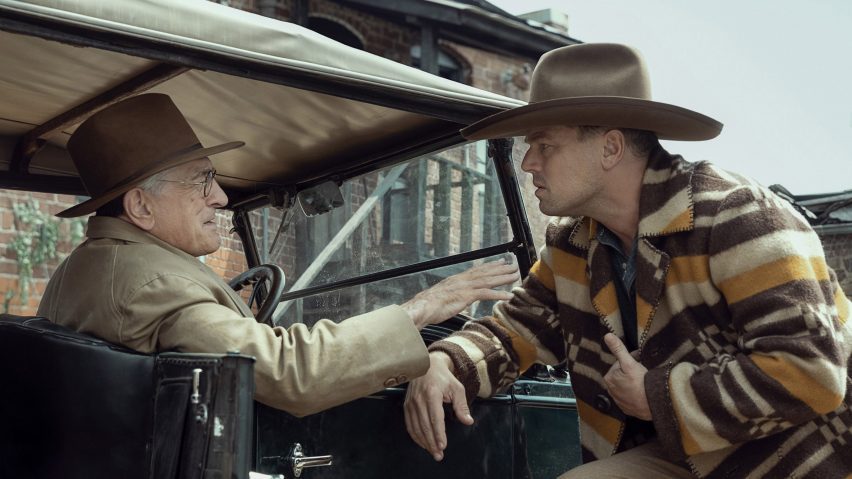
Production design makes you "feel like a detective" says Killers of the Flower Moon designer Jack Fisk
Production designer Jack Fisk built a railway station from scratch and researched historic documents to recreate early 20th-century Oklahoma in his sets for Martin Scorsese's new film Killers of the Flower Moon.
Fisk has worked in the film industry for more than 50 years and collaborated with a number of big-name directors, including Roger and Gene Korman, Brian de Palma and Terrence Malick, for whom he built a house for the film Days of Heaven in less than four weeks.
Killers of the Flower Moon marks the first time Fisk has worked with Scorsese, who reached out to the designer because of his experience of building outdoor sets.
"It was exciting when he called me on this project – my experience has been, since Days of Heaven, building sets out on location," Fisk told Dezeen on a video call from Los Angeles, which he was visiting to attend the premiere of Killers of the Flower Moon.
"He wanted to tell the story. He wanted to shoot it in Oklahoma, he wanted it wide, big, like a Western."
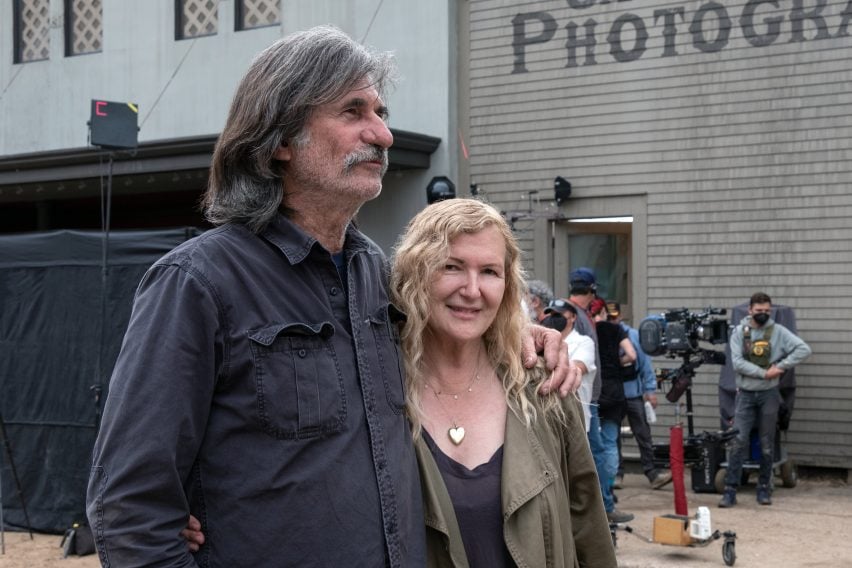
Killers of the Flower Moon is based on the true story of how members of the Native American Osage Nation were systematically murdered in the 1920s after oil was discovered on their land, making them very wealthy but also making them targets.
It was shot in Oklahoma, with the city of Pawhuska in Osage County turned into Fairfax, where much of the story takes place.
Fisk, who had worked on another film in Pawhuska years earlier, already knew some of the background about the Osage Nation.
"I started investigating, and I went back to some of the first treaties around 1808 and 1825 and saw how the Osage were taken advantage of by our government, to move them around, to open land for European settlers," he said.
Fisk also investigated the backgrounds of the film's characters in order to build sets that would be historically accurate, including that of the central character Mollie Burkhart, played by Lily Gladstone.
"I wanted to figure out where Mollie lived in 1920," he explained. "Nobody knew, there was no record. But then I started going through the county records, and by the time the film started shooting, I found four of her houses."
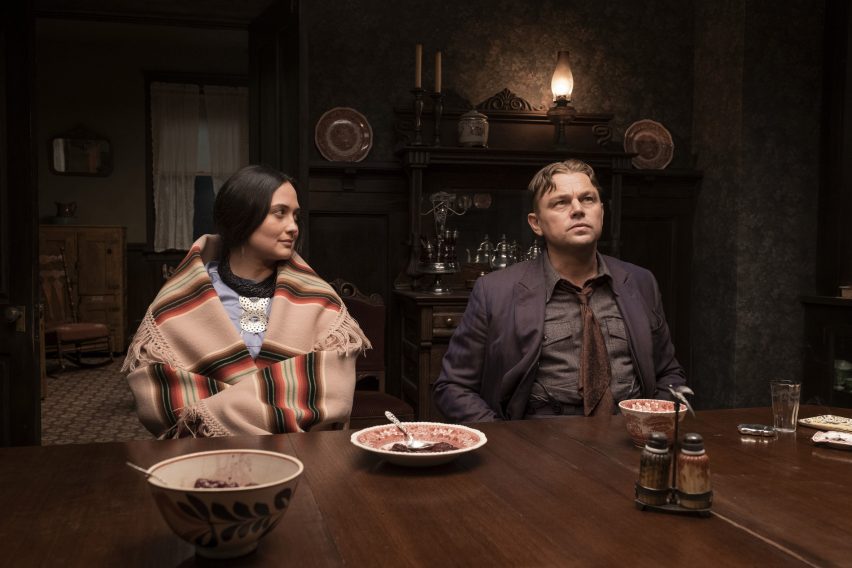
Two of those were recreated in the film, including a house in Fairfax that Burkhart buys with her husband Ernest, played by Leonardo DiCaprio.
To recreate the town, Fisk looked at photographs from the time as well as fire insurance maps that stated what materials the buildings were made of.
"I was able to lay out the whole town, every building, for different years and how they evolved," he said.
"They gave us two blocks of decrepit buildings in Pawhuska that we could use for our town, and I started to try to integrate as much of the information I learned about Fairfax into these two blocks," Fisk added.
"At the end of the road, we put up a blue screen for CGI and when we were done, we were able to paint the prairie going off the town – today there are a lot more trees than there were back in 1920s."
An integral part of the Killers of the Flower Moon set was the Fairfax train station, which Fisk built from scratch.
"The train station was torn down, but I had some beautiful pictures of it," he said. "I found plans for that station in some old books about the Santa Fe Railroad and we were able to recreate it in a lot in Pawhuska."
"We put in 1,600 feet of train track," he added. "We built the train station to the plans of the original, and we brought in a steam locomotive and three Pullman cars from Arkansas and put them on the track."
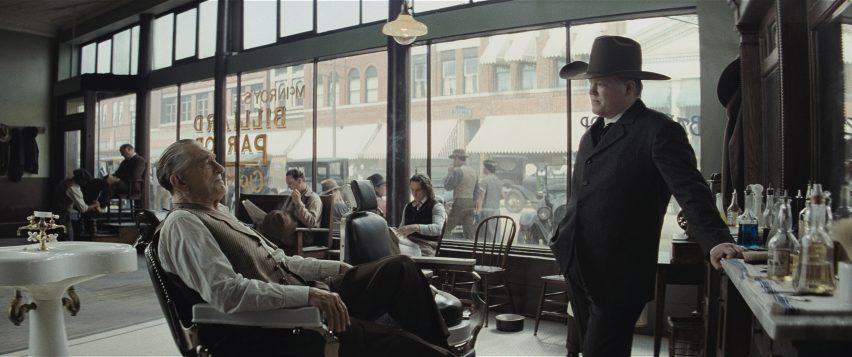
Fisk also tore out the ceiling of an old appliance store, revealing clerestory windows and turning it into the light-filled pool hall and barber shop that is one of the film's central sets.
"I remembered, as a kid, getting my hair cut in the pool hall in a little town in the Midwest," Fisk said. "I said to Marty [Scorcese] that we could combine the pool hall and the barber shop – he loved the idea, and it became a really interesting set."
"All the people in there planning to get the Osage money looked out the window to see the Osage world going by, they knew who had money and who had lost it, and it was a great place for them to conspire."
The designer also painted about 40 houses to shoot one of the neighbourhoods in Fairfax. All the houses were originally white, the most common colour in the US after world war two, and didn't fit the colours from the 1920s colour charts that Fisk had bought from eBay.
"We told the house owners 'we'd like to paint two sides of your house in one of these colours, and when we're done shooting, we'll come back and either paint the other two sides the same colour, or we'll paint those two sides back to white'," Fisk said.
After filming was wrapped, only one house decided to go back to white.
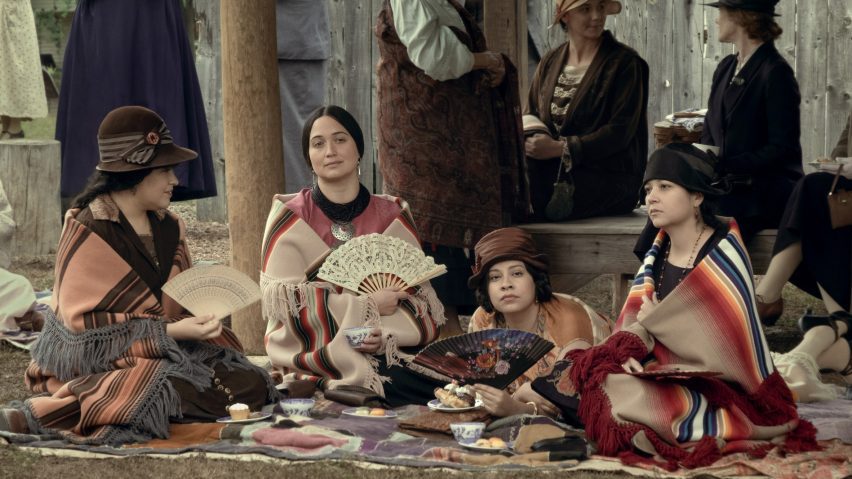
For one of Mollie's houses, Fisk chose a yellow colour found in another of the buildings used for the film.
"I found that yellow in the Masonic Lodge, behind a wall," Fisk said. "There were some boards that colour and I took one to the painters and said, 'this would be a good colour for Mollie's house'."
It is these kinds of discoveries, based on research, that Fisk appreciates most about his work.
"It's an investigation, but it's exciting," he said. "You feel sort of like a detective, and you can't really design things until you get you get the knowledge of the research."
As well as the house in the city, Fisk and his team built Mollie's house in the Osage settlement town of Gray Horse and its surrounding environments.
"We built a piece of the Osage reservation, which she was looking at, and we built the cemetery, which was important because there were so many people ending up in the cemetery," he said.
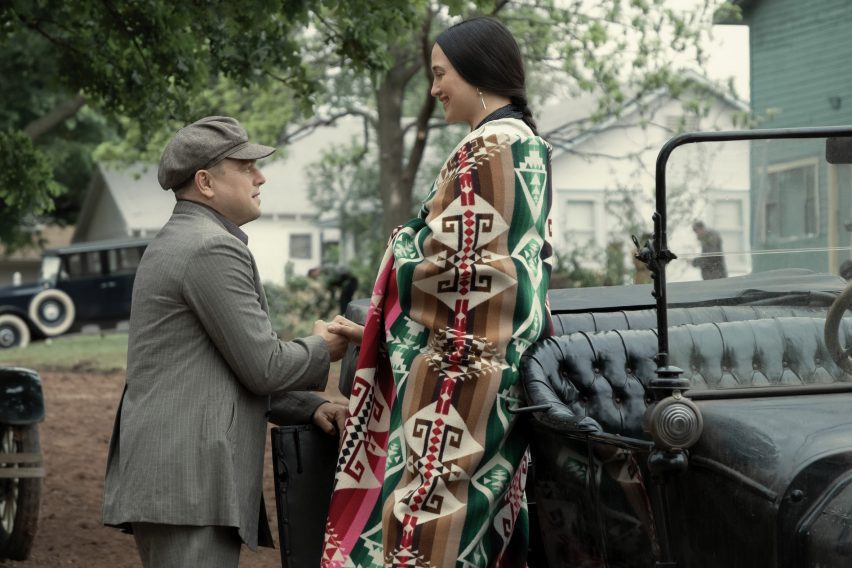
Fisk also built an oil derrick from scratch, using the same plans for an 1896 derrick that he had used for Paul Thomas Anderson's 2007 film There Will Be Blood.
More oil derricks were added using CGI to create the right atmosphere for film character William Hale's ranch, which was also surrounded by cattle to give it the feel of a Western.
"Marty is from New York City, so he went crazy when he saw the prairie and cattle, he got so excited – it was like a kid in a candy store," Fisk said. "He wore those cows out!"
The team ended up building around 40 sets for Killers of the Flower Moon, which Fisk believes adds to the final result.
"It takes a different mindset to build in the environment, but I think the reward is that you really get a sense of time and place," he said.
Other recent films with impressive worldbuilding include Wes Anderson's Asteroid City and Greta Gerwig's Barbie.
The photography is courtesy of Apple TV+. Killers of the Flower Moon will be released in cinemas on 20 October.
Dezeen In Depth
If you enjoy reading Dezeen's interviews, opinions and features, subscribe to Dezeen In Depth. Sent on the last Friday of each month, this newsletter provides a single place to read about the design and architecture stories behind the headlines.